Commentaries

By Linda K. Westman (University of Sheffield, UK)
Will cities play a key role at COP26 in Glasgow? This commentary examines three arguments about the importance of cities in delivering effective global climate action. Each argument is developed in relation to the negotiating position and political strategy of the UNFCCC Local Government and Municipal Authority (LGMA) constituency (LGMA, 2019).
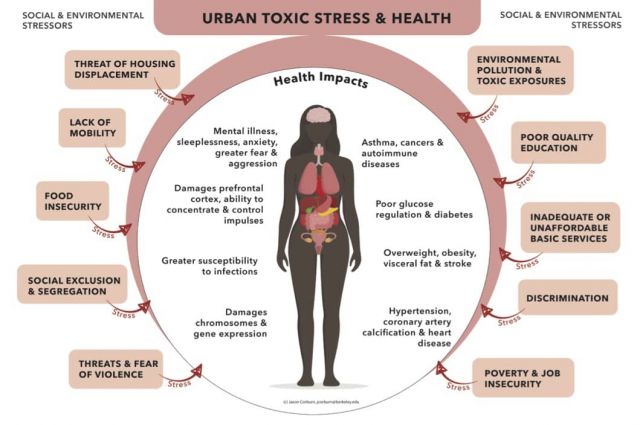
By Jason Corburn (University of California, Berkeley, US)
The overlapping crises of climate change, COVID-19, and persistent social inequities are acutely felt in cities, particularly among the poor and already vulnerable. Urban climate justice demands a focused strategy to support the healing of these vulnerable communities while also creating new opportunities for them to co-lead more equitable climate resiliency strategies. COP-26 must address 'healing cities for climate justice;' or the need for urgent investments with (not on or for) already vulnerable people and places in order to eliminate existing suffering and urban traumas, while also planning for future prosperity.
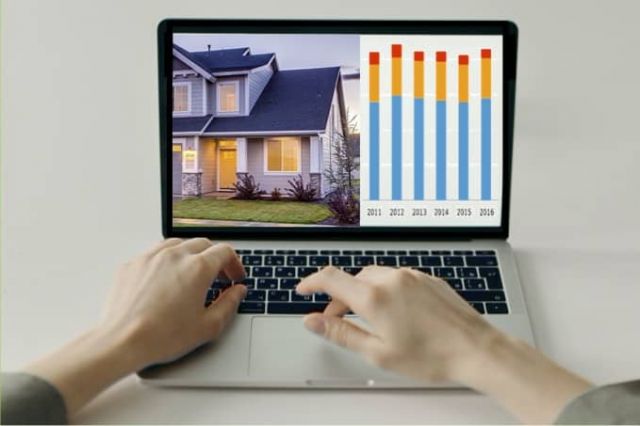
By Thomas Lützkendorf (Karlsruhe Institute of Technology, DE), Ursula Hartenberger (PathTo2050, BE), York Ostermeyer (Chalmers U, SE)
COP-26 is about showcasing action and replicable, practical solutions that will accelerate market transformation. Climate action must become incorporated into the regular activities of the construction and real estate sectors. The way to achieve this is to incentivise a systematic and transparent approach to building-related information which can accelerate and reward stakeholder action. The building passport can accomplish this by creating a "living document". In first instance, governments should set an example by making building passports mandatory for public buildings and then consecutively roll it out across other building typologies and market segments.
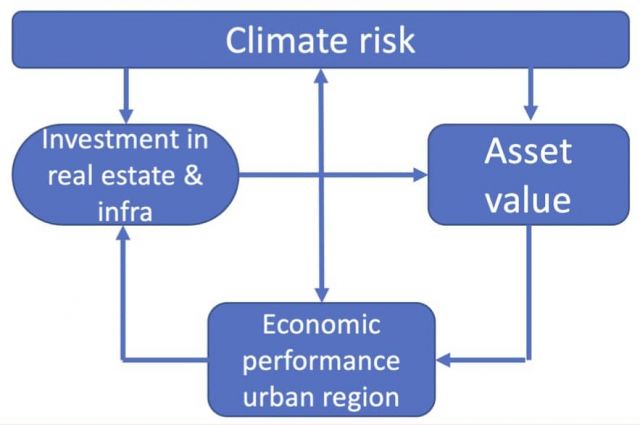
By Ellen van Bueren (Delft University of Technology, NL)
The delegates at COP-26 should now fully direct their attention to creating agreements and action plans. This creates a momentum to start planning our urban futures with a long-term perspective, in tune with the changing climate. The emphasis on adaptation is not always an appropriate option as it has unintended consequences which compound risks and can lead to a downward spiral of neighbourhoods and cities. A public debate is needed to develop clarity on when and where adaptation or managed retreat are appropriate. We need to ask: how can city regions develop in a resilient way, what assets should be preserved, at what costs and how do we protect vulnerable citizens?
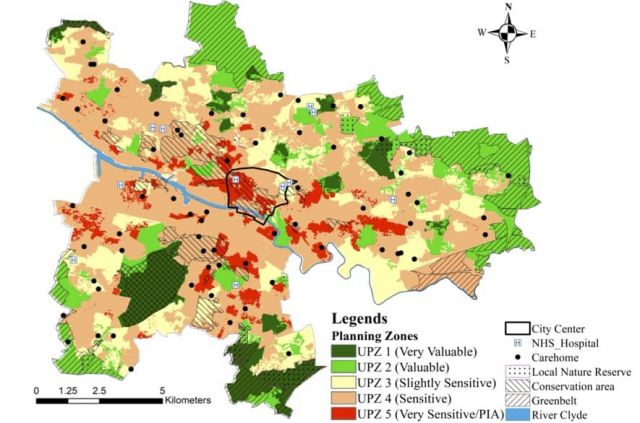
By Rohinton Emmanuel (Glasgow Caledonian University, UK)
Urban warming creates a 'double jeopardy' on a majority of humans (urban heat island and global warming). Sufficient information exists to identify where local action is most needed to protect those who are most vulnerable. As a matter of urgency, COP-26, national governments and local authorities need to address heat vulnerability by identifying vulnerable areas and implementing changes in planning practices.

By Michael Donn (Victoria University Wellington, NZ)
The complex and dynamic interactions between 3-D built form and the local environment must be accounted for in planning decisions to create pleasant, resilience microclimates for now and the future. Present planning procedures are over-simplistic and unsuitable. New approaches are suggested.

By Christhina Candido, Rebecca Bentley and Samin Marzban (U Melbourne, AU)
Buildings are often referred to as a "second skin", providing sheltered infrastructure for working, playing, learning and living. People place trust in buildings to protect them and to provide safe indoor environments. Lessons from COVID-19 and recent extreme weather events are pertinent to COP-26, linking public health to the need for both mitigation and adaptation.
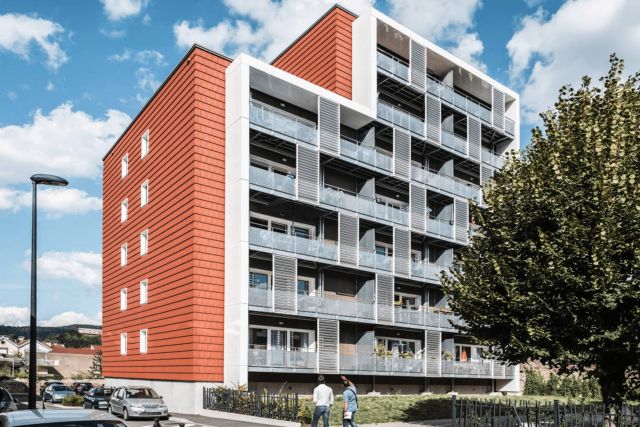
By Guillaume Habert (ETH Zurich, CH)
The construction industry faces many pressures including: to deliver both rapid urbanization and a steep decarbonization of the materials that it uses. Radical reductions in GHG emissions are needed by 2030, so the construction industry must drastically reduce its operational and embodied emissions within a short time frame. It is imperative to start implementing realistic solutions straightaway. Fast growing bio-based agricultural materials can store carbon in less than a decade and provide a realistic solution for building materials. Positive change can be created quickly by creating both supply push (agriculture) and demand pull (public procurement and regulatory demand).
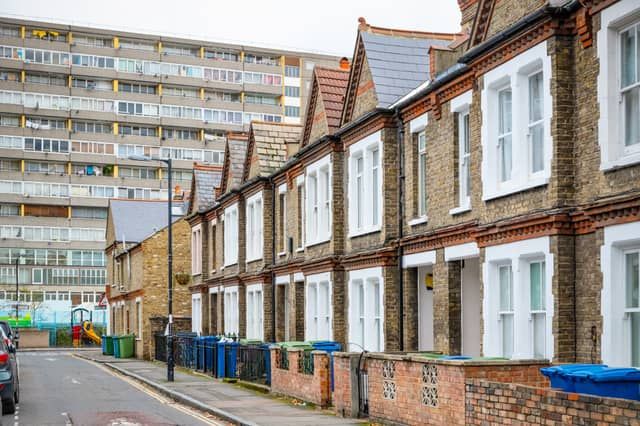
By Jonathon Taylor (Tampere U, FI), Lauren Ferguson* , Anna Mavrogianni* & Clare Heaviside* (*University College London, UK)
The changing climate is expected to have a disproportionate impact on disadvantaged groups worldwide, due to greater exposure - and vulnerability - to various climate hazards. Urgent actions are needed to provide equity through not only providing mitigation measures, but also adapting homes that are most vulnerable to climate effects.

By Ankit Kumar (U of Sheffield, UK), Joshua Kirshner (U of York, UK), Lata Narayanaswamy (U of Leeds, UK) and Enora Robin (U of Sheffield, UK)
In the past decade, growing attention has focused on
South-South cooperation in climate change mitigation, energy transitions and
infrastructure development, especially on the increasing role of BRICS
countries in sub-Saharan Africa (SSA). The questions of appropriate development
- reducing the dependencies on carbon-based energy (and mineral consumption)
for development - are highly pertinent to climate justice and an equity in
partnership.

By Yamina Saheb (Lausanne University, CH)
Avoiding the climate emergency requires going beyond the current set of policy measures. Instead, the concept of sufficiency needs to be adapted and applied to today's environmental and societal challenges. This would provide clear metrics that are equitable and within the Earth's ecological limits. The application of sufficiency to policies for building stock would provide a decent living standard for all and have a significant impact on limiting global warming.
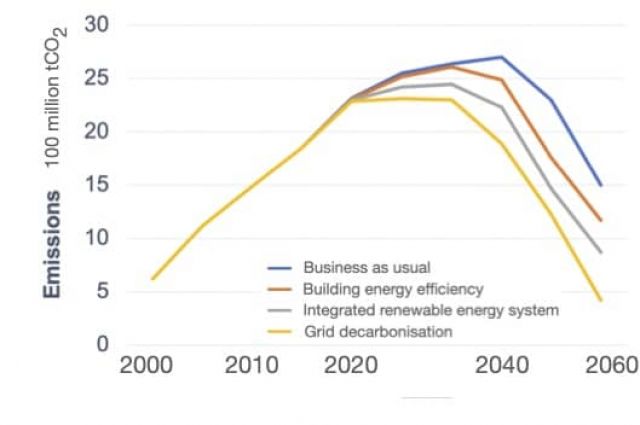
By Wei Yang and Jie Li (Tianjin University, CN)
China's pledge to become carbon neutral will have profound effects on its existing and new buildings. Scalable scenarios from national to district levels have been created to begin a process of assessing and apportioning carbon budgets. A range of new economic, social and technical measures will be needed to achieve this radical transformation.
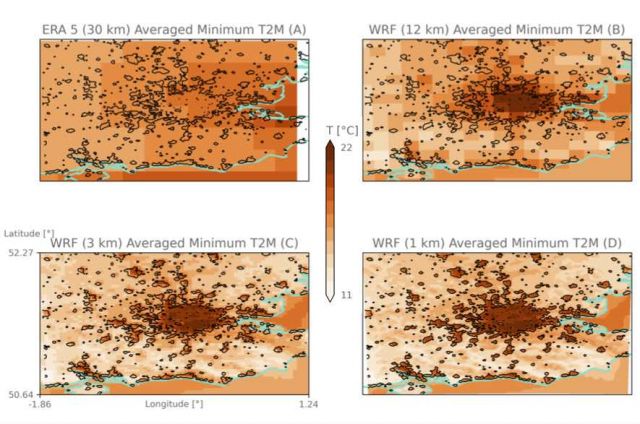
By Clare Heaviside (University College London - UCL), Jonathon Taylor (UCL & Tampere U), Oscar Brousse (UCL), Charles Simpson (UCL)
Current and projected temperatures simulated by global climate models are typically output at a coarse resolution of 30-100 km. This is unhelpful for identifying climate-related public health risks in cities. New mapping is needed at higher resolution to better characterize hazards and prepare location-specific adaptation plans.
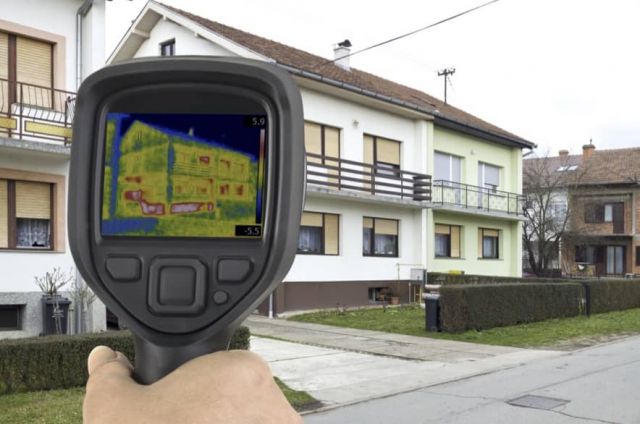
By Fionn Stevenson (University of Sheffield, UK)
COP-26 represents a significant opportunity for countries to make detailed commitments for their GHG emissions reductions and to rethink how buildings are regulated. Governments have a central role to ensure that widespread and consistent change occurs within the construction and real estate supply chains by introducing new regulatory measures to ensure that buildings meet their performance targets.

By Sarah J. Darby (Oxford University, UK)
It is time for COP-26 to move away from arguing about carbon offset arcana and technological fixes to establishing a culture of practice and learning, with regional forums to support local action in providing shelter, food, water, business and communications. Capability addresses the questions of 'how' by creating practical solutions and carries with it public support for a liveable future.
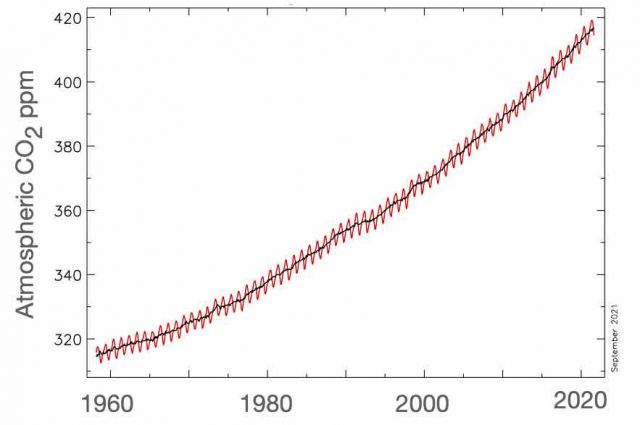
By William E. Rees (Professor Emeritus, University of British Columbia, CA)
Do not expect significant progress from COP-26 on climate change mitigation. There are fundamental barriers that prevent the deep and rapid changes that scientists advocate. Most countries adhere to economic growth policies - which create ecological overshoot. Unless and until we accept that we must live within ecological limits, then climate change will not be adequately tackled. Energy and resource consumption must be addressed through controlled economic contraction.
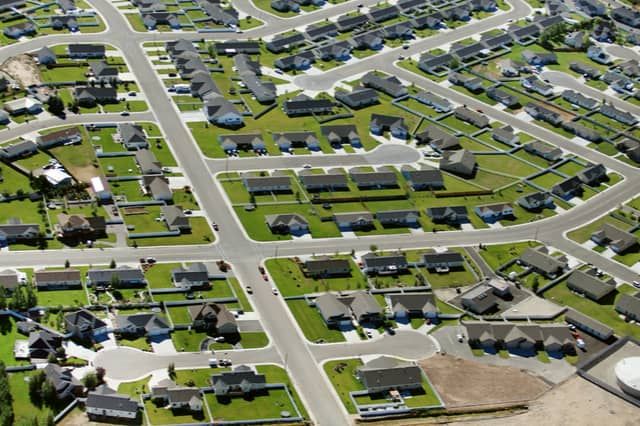
By Stefan Siedentop (ILS - Research Institute for Regional and Urban Development & TU Dortmund University, DE)
Considerable institutional, technological and social lock-in inhibits the needed transition to a climate-friendly society. To overcome this, the socio-spatial effects of climate action must be on an equal basis with mitigation efficacy. Overcoming carbon lock-in in the built environment is much more than a technical issue; it will require the synergy of social, environmental and territorial justice.

By Maria Balouktsi (Karlsruhe Institute of Technology, DE)
It is broadly accepted that cities have a crucial role to play in delivering GHG reductions and many initiatives already exist. However, more needs to be done in policy and practice to coordinate, facilitate and accelerate the role of cities in delivering substantial mitigation.

By Robin Nicholson CBE (Cullinan Studio and The Edge, UK)
Personal experience as a construction professional and an expert advisor to client organisations and to government has shown how slow top-down approaches can sometimes be to create change. In contrast, a bottom-up approach can result in rapid and strong change. An example of young schoolchildren being empowered to reduce their school's energy demand has yielded astonishing results. The climate emergency is an intergenerational issue that will dramatically affect the younger generation. Involving childen and harnessing their positive approach is an imperative to constructive change.
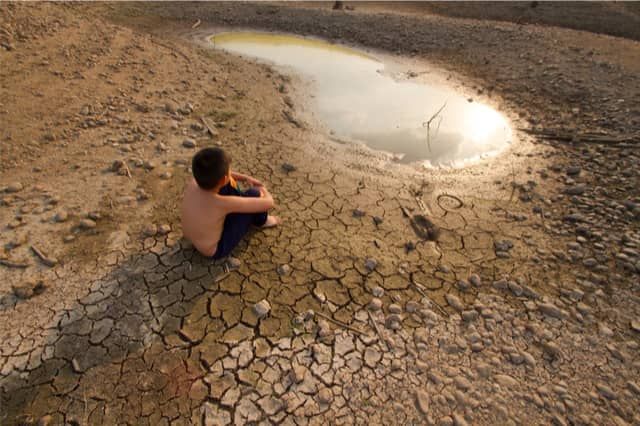
By Raymond J. Cole (University of British Columbia, CA)
For the foreseeable future, the current young generation and those following will be navigating through a difficult, turbulent period and have to prepare for a changing world - what Yunkaporta (2020) characterizes as the creation of 'cultures and societies of transition' toward a qualitatively different future era. Intergenerational obligations and rights have a long history in moral and ethical philosophy and legal discussions and, indeed, Article 24 of the Convention on the Rights of the Child declares their right to a safe and healthy future. The climate emergency is a child rights issue and governments participating in COP-26 have an obligation to acknowledge this fundamental right in their decision-making about climate change policies and commit to placing a price on any pollution that threatens children's futures (Vandergrift, 2020).
Latest Peer-Reviewed Journal Content
A framework for 1.5°C-aligned GHG budgets in architecture
G Betti, I Spaar, D Bachmann, A Jerosch-Herold, E Kühner, R Yang, K Avhad & S Sinning
Net zero retrofit of the building stock [editorial]
D Godoy-Shimizu & P Steadman
Co-learning in living labs: nurturing civic agency and resilience
A Belfield
The importance of multi-roles and code-switching in living labs
H Noller & A Tarik
Researchers’ shifting roles in living labs for knowledge co-production
C-C Dobre & G Faldi
Increasing civic resilience in urban living labs: city authorities’ roles
E Alatalo, M Laine & M Kyrönviita
Co-curation as civic practice in community engagement
Z Li, M Sunikka-Blank, R Purohit & F Samuel
Preserving buildings: emission reductions from circular economy strategies in Austria
N Alaux, V Kulmer, J Vogel & A Passer
Urban living labs: relationality between institutions and local circularity
P Palo, M Adelfio, J Lundin & E Brandão
Living labs: epistemic modelling, temporariness and land value
J Clossick, T Khonsari & U Steven
Co-creating interventions to prevent mosquito-borne disease transmission in hospitals
O Sloan Wood, E Lupenza, D M Agnello, J B Knudsen, M Msellem, K L Schiøler & F Saleh
Circularity at the neighbourhood scale: co-creative living lab lessons
J Honsa, A Versele, T Van de Kerckhove & C Piccardo
Positive energy districts and energy communities: how living labs create value
E Malakhatka, O Shafqat, A Sandoff & L Thuvander
Built environment governance and professionalism: the end of laissez-faire (again)
S Foxell
Co-creating justice in housing energy transitions through energy living labs
D Ricci, C Leiwakabessy, S van Wieringen, P de Koning & T Konstantinou
HVAC characterisation of existing Canadian buildings for decarbonisation retrofit identification
J Adebisi & J J McArthur
Simulation and the building performance gap [editorial]
M Donn
Developing criteria for effective building-sector commitments in nationally determined contributions
P Graham, K McFarlane & M Taheri
Reimagining circularity: actions for optimising the use of existing buildings
R Lundgren, R Kyrö, S Toivonen & L Tähtinen
Effective interdisciplinary stakeholder engagement in net zero building design
S Vakeva-Baird, F Tahmasebi, JJ Williams & D Mumovic
Metrics for building component disassembly potential: a practical framework
H Järvelä, A Lehto, T Pirilä & M Kuittinen
The unfitness of dwellings: why spatial and conceptual boundaries matter
E Nisonen, D Milián Bernal & S Pelsmakers
Environmental variables and air quality: implications for planning and public health
H Itzhak-Ben-Shalom, T Saroglou, V Multanen, A Vanunu, A Karnieli, D Katoshevski, N Davidovitch & I A Meir
Exploring diverse drivers behind hybrid heating solutions
S Kilpeläinen, S Pelsmakers, R Castaño-Rosa & M-S Miettinen
Urban rooms and the expanded ecology of urban living labs
E Akbil & C Butterworth
Living with extreme heat: perceptions and experiences
L King & C Demski
A systemic decision-making model for energy retrofits
C Schünemann, M Dshemuchadse & S Scherbaum
Modelling site-specific outdoor temperature for buildings in urban environments
K Cebrat, J Narożny, M Baborska-Narożny & M Smektała
Understanding shading through home-use experience, measurement and modelling
M Baborska-Narożny, K Bandurski, & M Grudzińska
Building performance simulation for sensemaking in architectural pedagogy
M Bohm
Beyond the building: governance challenges in social housing retrofit
H Charles
Heat stress in social housing districts: tree cover–built form interaction
C Lopez-Ordoñez, E Garcia-Nevado, H Coch & M Morganti
An observational analysis of shade-related pedestrian activity
M Levenson, D Pearlmutter & O Aleksandrowicz
Learning to sail a building: a people-first approach to retrofit
B Bordass, R Pender, K Steele & A Graham
Market transformations: gas conversion as a blueprint for net zero retrofit
A Gillich
Resistance against zero-emission neighbourhood infrastructuring: key lessons from Norway
T Berker & R Woods
Megatrends and weak signals shaping future real estate
S Toivonen
A strategic niche management framework to scale deep energy retrofits
T H King & M Jemtrud
Generative AI: reconfiguring supervision and doctoral research
P Boyd & D Harding
Exploring interactions between shading and view using visual difference prediction
S Wasilewski & M Andersen
How urban green infrastructure contributes to carbon neutrality [briefing note]
R Hautamäki, L Kulmala, M Ariluoma & L Järvi
Implementing and operating net zero buildings in South Africa
R Terblanche, C May & J Steward
Quantifying inter-dwelling air exchanges during fan pressurisation tests
D Glew, F Thomas, D Miles-Shenton & J Parker
Western Asian and Northern African residential building stocks: archetype analysis
S Akin, A Eghbali, C Nwagwu & E Hertwich
Join Our Community

The most important part of any journal is our people – readers, authors, reviewers, editorial board members and editors. You are cordially invited to join our community by joining our mailing list. We send out occasional emails about the journal – calls for papers, special issues, events and more.
We will not share your email with third parties. Read more

Latest Commentaries
COP30 Report
Matti Kuittinen (Aalto University) reflects on his experience of attending the 2025 UN Conference of the Parties in Belém, Brazil. The roadmaps and commitments failed to deliver the objectives of the 2025 Paris Agreement. However, 2 countries - Japan and Senegal - announced they are creating roadmaps to decarbonise their buildings. An international group of government ministers put housing on the agenda - specifying the need for reduced carbon and energy use along with affordability, quality and climate resilience.
Building-Related Research: New Context, New Challenges
Raymond J. Cole (University of British Columbia) reflects on the key challenges raised in the 34 commissioned essays for Buildings & Cities 5th anniversary. Not only are key research issues identified, but the consequences of changing contexts for conducting research and tailoring its influence on society are highlighted as key areas of action.